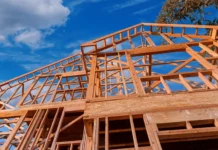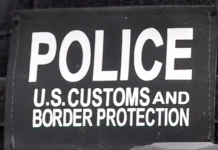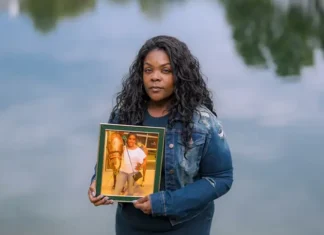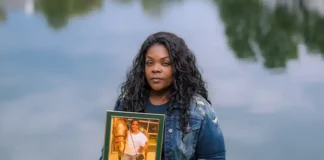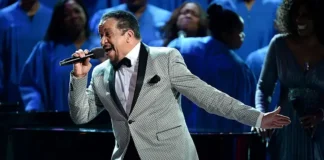By Chris B. Bennett, The Portland Medium
When you ask the average Black person about the term BIPOC, a likely response might be “BIPOC”, what is that? Bi-what? Or, Bi-who? BIPOC – Black, Indigenous, and People of Color. The more I see the term, the more I wonder where it came from, who created it, and why. The fact that many Black folks are not familiar with the term, even though it is broadly used across the country in political and non-profit circles, indicates to me that it is a term that we collectively as Black folks do not embrace.
While the term might be seen as an inclusive compromise towards African Americans who push back against the broad references to people of color, the fact remains that the term BIPOC, simply put, is another broad-based term that is intentionally used by policymakers and bureaucrats to water down the ills that plague our society so they don’t look so bad.
When you really start to analyze the numbers, one thing is constant – the numbers look much different when you isolate Black people away from people of color. When considered in isolation, the statistics related to disparities in America for Black folks jump off the page and usually indicate a problem that should be dealt with right away. While the numbers for people of color, which usually look much better, might indicate something of concern, but fall more in line with “let’s just monitor the situation” for a while and see if it gets any worse. This is especially true when you take into consideration that people of color can now include Asians, Middle Easterners, and immigrants from Africa (not to be confused with descendants of African born slaves in the U.S.). You don’t have to look very far to see that these groups in and of themselves present disparities when it comes to “People of Color.” In many cities across the country there are areas that were historically inhabited by African Americans that are now under “redevelopment” or gentrification. As you ride down the streets of these historic neighborhoods, you can see many businesses that are owned by people of color, but very few that are owned by Blacks, and yet, policymakers and developers will proudly boast about the number of BIPOC or minority-owned businesses that are in the area, as they conveniently disregard those who were left out.
When you look at unemployment rates, analysis of the numbers shows a similar trend. According to the Economic Policy Institute, the unemployment rate for Q1 of 2021 in Texas was 6.9 percent. A further breakdown of the numbers shows the unemployment rate was 4.9 percent for Whites, 8.0 percent for Hispanics, 5.1 percent for Asian/Asian Pacific Islander and an alarming 11.2 percent for Blacks.
When you look at suspension and expulsion rates in public schools, again the numbers for Black students jump off the page. In 2013-14, according to the National Center for Education Statistics, “about 2.6 million public school students (5.3 percent) received one or more out-of-school suspensions. A higher percentage of Black students (13.7 percent) than of students from any other racial/ethnic group received an out-of-school suspension, followed by 6.7 percent of American Indian/Alaska Native students, 5.3 percent of students of two or more races, 4.5 percent each of Hispanic and Pacific Islander students, 3.4 percent of White students, and 1.1 percent of Asian students.”
I could go on and on about other disparities that exist, but I’m sure by now you get the picture. We, as a community, cannot effectively advocate for ourselves if we don’t use knowledge and information that truly represents the realities of our existence. We cannot allow policies based on a misrepresentation of facts to dictate our plight in America and the future for our kids.
The time has come for advocates and leaders from the Black community to push back when presented with the all-inclusive umbrella of BIPOC communities and how policymakers are making a difference as it relates to “people of color.” Asians advocate for Asians and Asian issues; Latinos advocate for Latinos and Latinos issues; so why, when it comes to Black folks, are we and our issues put into an all-inclusive category. The issues are not all-inclusive when it comes to who is being shot and killed by police; the issues are not all-inclusive when Black families and Black kids are disparately suffering from health issues caused by years of environmental racism that has tainted the parks, soil, water and air in the neighborhoods that many of us grew up in. The issues are not all-inclusive when it comes to our kids having to share old recycled books and refurbished iPads in schools that are historically under-performing or when it comes to who is being pulled over by police more often than others. These are examples of things that happen to “Just Us” and often have us looking for the American myth of “Justice For All” in a legal system that hardens more criminals than it reforms.
This message is not to separate us from other groups that are suffering in many ways, but rather, this is a call to action for Black folks in this country to stand up and be vocal about our issues and to get others to truly see how these issues impact Black people and our communities. The numbers don’t lie and it doesn’t matter what color glasses you put on to see them, when it comes to the plight of African Americans in this country, we are going to continue getting the short end of the stick if we allow policymakers to only look at the rosy side of the bush, and blatantly ignore the thorns that are attached to the stem.
There is a time and a place for everything and now is not the time to let the term BIPOC define who we are and what we do.




